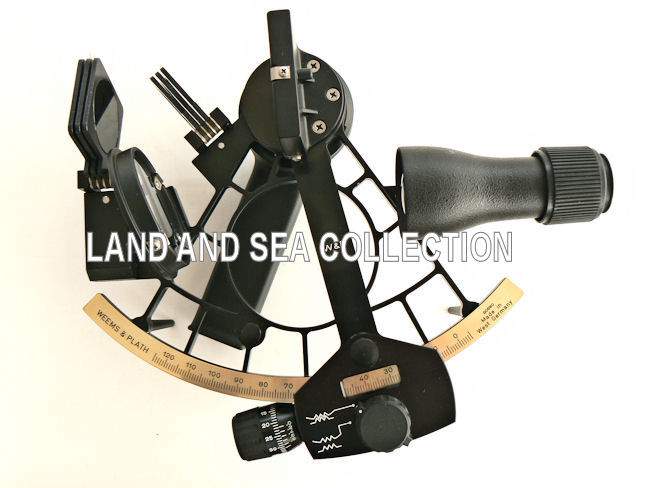
Special Lever Action Release. This is the first example of this type sextant we’ve seen even though it was introduced by C. Plath as far back as 1991. It is brand new, never used flawless “Collector Quality” condition. The difference between this sextant and others of this type is that there is no quick release clamp in the form of a trigger at the bottom of the index arm. In place of it is a knurled knob that when turned to the right lowers the endless tangent screw away from the arc. We have tried this feature and it works perfectly. Whether or not it is an improvement over the classic clamp, we’ll leave for others to say. It is also fitted with over size mirrors, with the horizon being of the Univison type.
The instrument is engraved Weems & Plath on the left side of the arc and “W&P” on the index arm with no serial number. We surmise it is a preproduction prototype that became part of the Weems & Plath product line in 1991, when it was featured in their catalog alongside the C. Plath Royal Traditional having the same design features.
In 2006, we sold a C. Plath Navistar “TRADITIONAL” sextant, Serial No. 64251 and except for the index arm release, and a different diode housing, the two are identical. See https://landandseacollection.com/id222.html for the sales listing. This variation is the first we’ve seen since then.
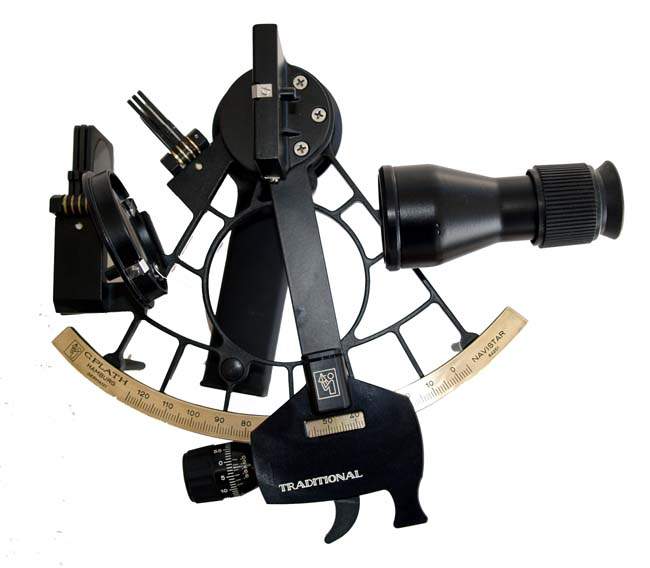
The Royal Traditional was the last new, high quality, model Plath introduced in 1989, just 12 years before their sextant production ceased. Don’t confuse this sextant with the Navistar Classic which had a “ladder” or “web” frame, which was made in greater numbers. Based on the scarcity of the TRADITIONAL, very few must exist, and even fewer of this variation.
It has these new, and exclusive “state of the art” design features:
Special circular frame
Lever action tangent screw release
Oversize mirrors with whole horizon
Adjustable vernier for “0“ index error
Miniature batteries and light emitting diode
Adjustable Makrolon handle for ergonomic fit
Larger housing for horizon mirror reduces stray light
Mahogany case deluxe brass fittings
DESIGN FEATURES:
The Navistar Traditional, is second only to the Navistar Classic, in Plath’s line of premium sextants and was made
in limited quantities. Because it was a new design in 1989 with many advanced features, it sold for more than other sextants.
The Traditional’s visual clues are the Circle frame design, and the special micrometer drum with a rotating
vernier, newly designed telescope and the usual Navistar brand imprint. The rotating vernier has six indents and reads to 10 seconds of arc. You turn it to match the “0” point with the “0” on the micrometer drum so that index error reads zero. This example has the exact same features. It comes with its original detailed instruction booklet, with an undated Weems & Plath certification and the number 90680. C. Plath quit producing sextants around
2001. The parent company has completely liquidated everything including machinery, equipment and spare parts.
PROVENANCE:
Purchased by a professional photographer in 1988 and used only as a static prop, but only on a few occasions.
CONDITION: Brand new and never used. It operates like a well oiled piece of machinery, and has NO faults even minor ones. Both mirrors shows as NEW. The illumination works. The bronze arc shows “as new”. There is no index or side error. The original certificate is included. The case cases some minor scratches and other marks of being handled. Its key is present.
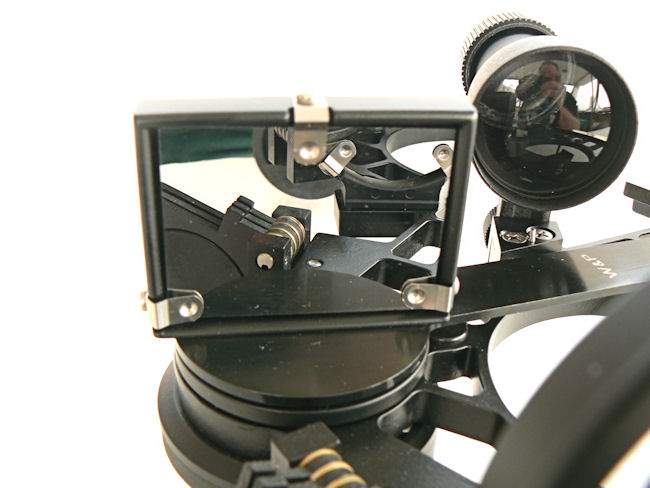
Perfect oversize index mirror

Flawless oversize whole horizon mirror

Tangent screw raised
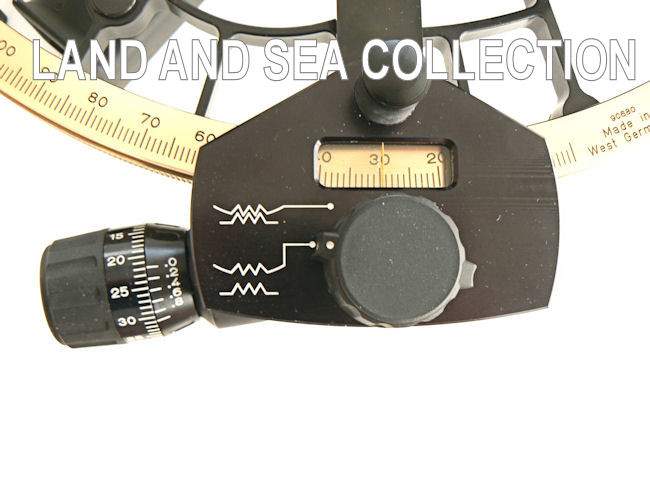
Tangent screw lowered
This is the only example of a C. Plath Navistar TRADITIONAL sextant with lever release that we have ever seen and is suitable for a collector or for use at sea . It requires someone who can appreciate the uniqueness of this sextant, and is willing to pay for this level of quality and excellence
STAR RATING: This super fine Collector Quality instrument rates FIVE PLUS STARS irrespective of age.
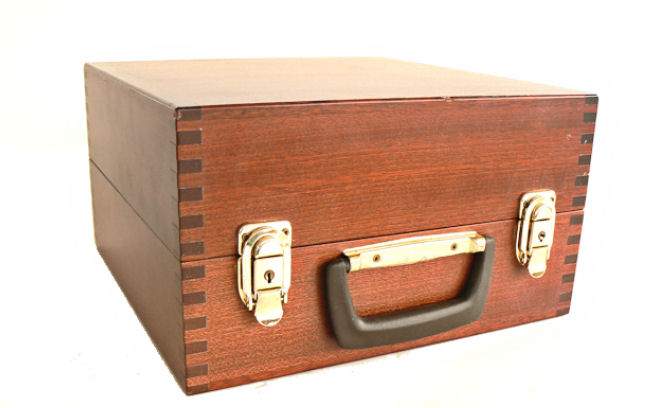
Mahogany Case
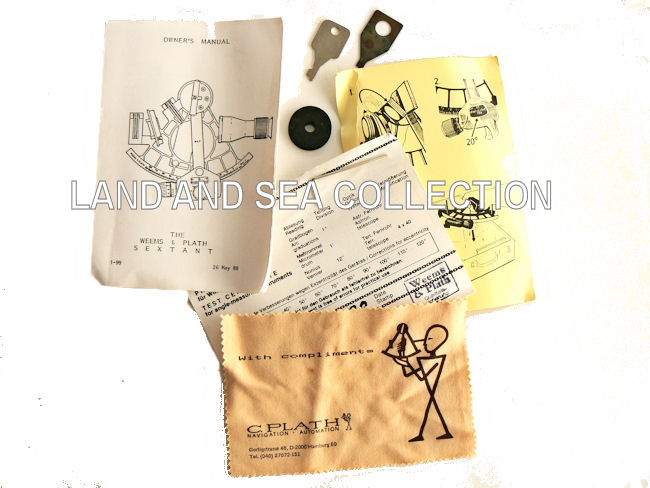
Papers & accessories
COMPANY HISTORY: In brief, Carl Plath started manufacturing sextants, in addition to other nautical products, in Hamburg Germany in 1862 though the company’s origin dates back to 1837. As a result WW II, C.Plath was dismantled completely by the occupation forces. Around 1950, various prohibitions were lifted, and C. Plath was allowed to begin production again of sextants and other nautical instruments. Also in 1949,C.Plath was offered a gyrocompass patent and in 1951 the first gyrocompass designed to this patent was presented to the public. C.Plath progressed from the role of instrument maker to that of a modern marine navigation equipment manufacturer. In the following years the product range was expanded by many more modern designs such as autopilots, speed logs, radio direction finders, etc.
In 1962 C. Plath was acquired by Litton Industries, a large American concern.The C. Plath North American Division was set up in 1978 in College Park near Washington. 1996 saw the introduction of the world’s first fiber-optic solid-state gyrocompass by C. Plath. The first ever gyrocompass with no moving parts. Sperry Marine was formed in 1997 with the combination of C.Plath, Decca Marine and Sperry Marine with more organizational changes yet to come. After 163 years, C.Plath changes its name to Sperry Marine in May 2000. In 2001 Sperry Marine becomes part of the Northrop Grumman Corporation.
C. PLATH NAVISTAR TRADITIONAL W
& P SPECIFICATIONS:
Measuring range -5 to 125 degrees
Tested accuracy 10 arc seconds
Telescope: 4 x 40 Coated optics
Frame:
Bronze with black enamel paint and bronze arc.
Micrometer Drum and Vernier Scale: reads to 10 seconds of arc
Index arm measures 8 15/16”
Index Mirror: 60 x 44.5 mm. aluminized on the rear side.
Horizon Mirror: 57mm diameter whole horizon
view
Shades:
3 for index mirror
3 for horizon mirror
Adjustable vernier for zero index error
Illumination:
Yes
Weight sextant
3.5 lbs, Weight case 5.3 lbs.
INCLUDED ARE:
1 Sextant frame
1
4 x 40 Scope
1 Mirror adjustment tool
1 Brush
1 Mahogany sextant case
1 Original owner’s manual and certificate
